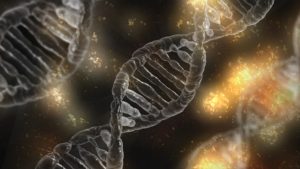 The field of genetics is ever-expanding and discovering new genes and how they work all of the time. Recently, more information was discovered regarding the human growth hormone (HGH) receptor gene.
The field of genetics is ever-expanding and discovering new genes and how they work all of the time. Recently, more information was discovered regarding the human growth hormone (HGH) receptor gene.
HGH is a vital and important hormone for growth and overall health as we get older. It is especially important for cellular regeneration and repair, which makes it no surprise that it has been popular in anti-aging circles.
Not to mention, it helps men and women lose weight, gain muscle and regain sexual function. In children, it is one of the most important hormones because it is what helps them to grow so quickly!
HGH Receptor Gene Aids in Survival
Interestingly, genetic research is showing that a shortened version of the HGH receptor gene, GHRd3, probably helps people to survive in situations with low resources or unpredictable environments. Approximately 1-2 million years ago, gene GHRd3 emerged, being the predominant version of the gene in Neanderthal and Denisovan ancestors.
 Then, more recently, during the last 50,000 years or so, that version became less prevalent with “a massive decrease in the frequency of this variant among East Asian populations,” stated Omer Gokcumen from the University of Buffalo.
Then, more recently, during the last 50,000 years or so, that version became less prevalent with “a massive decrease in the frequency of this variant among East Asian populations,” stated Omer Gokcumen from the University of Buffalo.
The evolutionary biologist also says, “we see the estimated allele frequency drop from 85% to 15% during the last 30,000 years.” Why did the variant change? Why would it fall out of favor?
According to the research, the function of GHRd3 helps to explain why these evolutionary changes occurred, with the theory being that it helped our ancestors to cope with nutritional stress, meaning low resources and poor nutrition.
Steady Resources in Recent Centuries Changed GHRd3’s Prominence
Dr. Gokcumen also hypothesizes that “Maybe the rapid technological and cultural advances [meaning increased food resources that do not run out for most people] over the past 50,000 years have created a buffer against some of the fluctuations in resources that made GHRd3 so advantageous in the past.”
Lead researcher, Marie Saitou, from the Norwegian University of Life Sciences, says, “GHRd3 is interesting because it is a very common deletion that is variable between you and me among humans. Normally, these kinds of important fundamental genes do not change between human to human and are highly conserved in other animals even.”
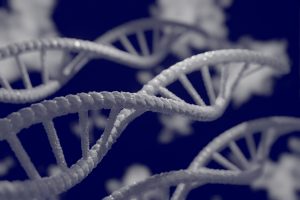 So basically, the HGH receptor gene is quite variable from person to person, some of the human population has it and some of them don’t, even though this is considered an “important fundamental gene.”
So basically, the HGH receptor gene is quite variable from person to person, some of the human population has it and some of them don’t, even though this is considered an “important fundamental gene.”
It’s strange that something so important could so easily be deleted from the genetic code. But it has, as stated earlier in this article. No wonder more and more people are turning to human growth hormone replacement therapy these days. They could be lacking in adequate genes to maintain hormone balance.
The Functions of GHRd3
In essence, the HGH receptor gene helps to control the body’s response to growth hormone and activates the processes that lead to growth. In order to study how the gene changed over time, scientists compared genomes between modern humans and four archaic hominids. Three Neanderthals and one Denisovan all had the GHRd3 variant.
In addition, the scientists looked at how GHRd3 functions in modern times. The presence of the variant was associated with improved outcomes for a group of children who had experienced severe malnutrition.
In mice studies, the research supported the theory that GHRd3 helps to regulate the body’s response to scarce food sources. In fact, some male mice that had the variant had biological similarities to mice that did not have much access to food. These similarities were traits that could help them survive during times of nutritional stress.
One study put mice with GHRd3 on a low-calorie diet and when compared to mice without the variant at 2 months of age, the GHRd3 group was smaller in size. This is a good thing during times of food scarcity because smaller bodies do not need as much food to run.
The effect of GHRd3 was not as prominent in females and so male and female mice carrying the variant ended up being the same size while on a low-calorie diet when typically, males are larger than females.
Saitou describes his research as showing that “GHRd3 leads to a ‘female-like’ expression pattern of dozens of genes in male livers under calorie restriction, which potentially leads to the observed size reduction.”
 Females are already smaller in size and may suffer negative evolutionary consequences if they lose body weight.
Females are already smaller in size and may suffer negative evolutionary consequences if they lose body weight.
Therefore, it seems likely that a genetic variant that may affect the response to nutritional stress has evolved in a sex-specific manner.
So, what does this research tell us? That human growth hormone is an incredibly important hormone, indeed!
It’s very interesting to learn about its evolutionary history but we also know that it is necessary for optimal quality of life. Have you checked your levels in the past 6 months? Better get on that.

- Will Human Growth Hormone Prove To Be The First Anti-aging Medication? [Last Updated On: December 20th, 2024] [Originally Added On: March 19th, 2020]
- Hgh Sprays (scam): What Is A Nanogram? The Quantity Of A Nano Gram [Last Updated On: December 22nd, 2024] [Originally Added On: April 9th, 2020]
- Hgh Benefits And Effects On Skin And Hair [Last Updated On: December 22nd, 2024] [Originally Added On: April 17th, 2020]
- Overall General Benefits Of Hgh [Last Updated On: December 20th, 2024] [Originally Added On: April 19th, 2020]
- Hgh Benefits [Last Updated On: November 25th, 2024] [Originally Added On: April 20th, 2020]
- HGH Is No Fountain Of Youth [Last Updated On: December 21st, 2024] [Originally Added On: April 29th, 2020]
- Hgh And Improvements In Body Composition [Last Updated On: December 23rd, 2024] [Originally Added On: April 30th, 2020]
- Getting Started with Injectable HGH Treatment [Last Updated On: March 25th, 2025] [Originally Added On: January 22nd, 2022]
- Finally! Real HGH! Not Scams! [Last Updated On: January 8th, 2025] [Originally Added On: January 24th, 2022]
- Hgh Therapy Program Diary [Last Updated On: February 7th, 2025] [Originally Added On: January 24th, 2022]
- Side Effects Of Human Growth Hormone [Last Updated On: March 26th, 2025] [Originally Added On: January 27th, 2022]
- Hgh Secretagogue [Last Updated On: January 2nd, 2025] [Originally Added On: January 29th, 2022]
- Weight Management And Hgh [Last Updated On: November 27th, 2024] [Originally Added On: January 29th, 2022]
- Hgh And Body Building [Last Updated On: March 27th, 2025] [Originally Added On: January 31st, 2022]
- Hgh Benefits Courtesy Of James Abernathy Ph.D [Last Updated On: January 8th, 2025] [Originally Added On: February 1st, 2022]
- Hgh Cell Regeneration [Last Updated On: March 28th, 2025] [Originally Added On: February 3rd, 2022]
- Testing Olympians Hgh Giving Unfair Advantage In Sports Performance [Last Updated On: March 29th, 2025] [Originally Added On: February 5th, 2022]
- All The Different Brands Of Human Growth Hormone [Last Updated On: March 31st, 2025] [Originally Added On: February 7th, 2022]
- Hgh Levels [Last Updated On: March 30th, 2025] [Originally Added On: February 7th, 2022]
- Test Your Hgh Blood Levels [Last Updated On: January 9th, 2025] [Originally Added On: February 8th, 2022]
- Getting Started With HGH Therapy Treatment [Last Updated On: February 23rd, 2025] [Originally Added On: February 9th, 2022]
- Human Growth Hormone 101 [Last Updated On: April 1st, 2025] [Originally Added On: February 12th, 2022]
- Hormone Frequently Asked Questions: HRT FAQ [Last Updated On: April 2nd, 2025] [Originally Added On: February 12th, 2022]
- Basic Questions About Hgh (Growth Hormone) [Last Updated On: April 28th, 2025] [Originally Added On: February 12th, 2022]
- When the Growth Hormone Revolution Began: HGH Study [Last Updated On: December 29th, 2024] [Originally Added On: February 14th, 2022]
- Hgh Doctors [Last Updated On: January 2nd, 2025] [Originally Added On: February 15th, 2022]
- HGH Decline And Aging [Last Updated On: April 3rd, 2025] [Originally Added On: February 17th, 2022]
- Some Of The Symptoms Of Decreased Human Growth Hormone [Last Updated On: April 4th, 2025] [Originally Added On: February 18th, 2022]
- HGH Deficiency Test: Human Growth Hormone Levels and Decline [Last Updated On: May 2nd, 2025] [Originally Added On: February 19th, 2022]
- Effects Of HGH On Skin [Last Updated On: April 5th, 2025] [Originally Added On: February 20th, 2022]
- Humatrope HGH: Human Growth Hormone Product [Last Updated On: April 27th, 2025] [Originally Added On: February 22nd, 2022]
- Quit Wasting Time and Fix Your Hormone Imbalance NOW! [Last Updated On: April 12th, 2025] [Originally Added On: April 13th, 2022]
- My Doctor Told Me I Was Dying [Last Updated On: February 20th, 2025] [Originally Added On: July 8th, 2022]
- Was it Fibromyalgia? Nope. Was it Chronic Fatigue Syndrome? Nope. And Now I’m Cured! [Last Updated On: April 19th, 2025] [Originally Added On: August 2nd, 2022]
- How to Boost Human Growth Hormone (HGH) Levels Naturally [Last Updated On: April 24th, 2025] [Originally Added On: October 7th, 2022]
- I Wasted Four Years of My Life [Last Updated On: April 26th, 2025] [Originally Added On: October 14th, 2022]
- Tiredness: The Enemy of Life [Last Updated On: February 17th, 2025] [Originally Added On: November 22nd, 2022]
- Discover the Exercise “Sweet Spot” That Reverses Cognitive Decline and See Similar Results With Growth Hormone Injections [Last Updated On: February 15th, 2025] [Originally Added On: December 13th, 2022]
- Penny: the Mountain Climber’s Story [Last Updated On: February 18th, 2025] [Originally Added On: January 10th, 2023]
- HGH Quick Fixes Fix Nothing - Choose Legal HGH [Last Updated On: February 19th, 2025] [Originally Added On: January 25th, 2023]
- A Letter to My Fellow General Practitioners [Last Updated On: March 17th, 2025] [Originally Added On: March 8th, 2023]
- Does HGH Therapy Have Positive Benefits in Chess Competition? [Last Updated On: February 21st, 2025] [Originally Added On: March 17th, 2023]
- Should You Trust Foreign Online Pharmacies for HGH Injections? [Last Updated On: February 24th, 2025] [Originally Added On: March 30th, 2023]
- What is the Molecular Structure of HGH? [Last Updated On: March 14th, 2025] [Originally Added On: April 20th, 2023]
- The Role Hormones Play in Attractiveness [Last Updated On: March 19th, 2025] [Originally Added On: April 28th, 2023]
- Is the Easy Needle for HGH Therapy a Good Choice? [Last Updated On: January 4th, 2025] [Originally Added On: May 17th, 2023]
- My Story – My Life Was Hell to I’m Living the Dream: HGH Testimonial [Last Updated On: January 5th, 2025] [Originally Added On: June 4th, 2023]
- How Does Human Growth Hormone Aid in Inflammation Reduction? [Last Updated On: January 13th, 2025] [Originally Added On: June 9th, 2023]
- Menopausal Hormone Therapy and Cancer [Last Updated On: December 24th, 2024] [Originally Added On: June 16th, 2023]
- Is HGH Deficiency Contagious? [Last Updated On: January 15th, 2025] [Originally Added On: July 11th, 2023]
- How to Make HGH Injections Easy [Last Updated On: February 15th, 2025] [Originally Added On: August 23rd, 2023]
- HGH From Mexican Sources – Is This Safe? [Last Updated On: January 10th, 2025] [Originally Added On: September 18th, 2023]
- HGH Deficiency is Often Misdiagnosed by General Practitioners [Last Updated On: January 11th, 2025] [Originally Added On: September 22nd, 2023]
- Introduction to HGH Therapy Treatment [Last Updated On: February 10th, 2025] [Originally Added On: February 10th, 2025]
- Understanding Human Growth Hormone (HGH) and Its Uses [Last Updated On: February 13th, 2025] [Originally Added On: February 13th, 2025]
- Biological Alchemy: The Art of Administering HGH Injections With Ease [Last Updated On: February 15th, 2025] [Originally Added On: February 15th, 2025]
- Introduction: Personal Health Crisis [Last Updated On: February 16th, 2025] [Originally Added On: February 16th, 2025]
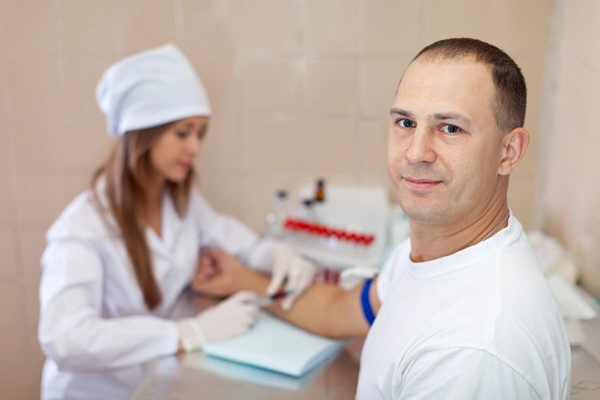
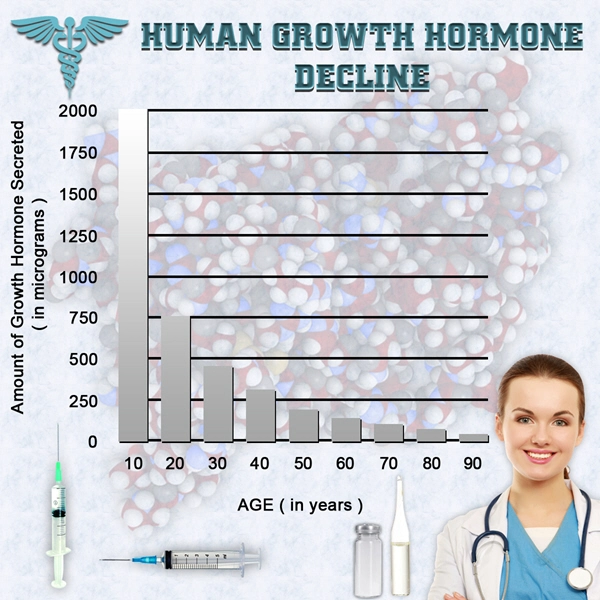
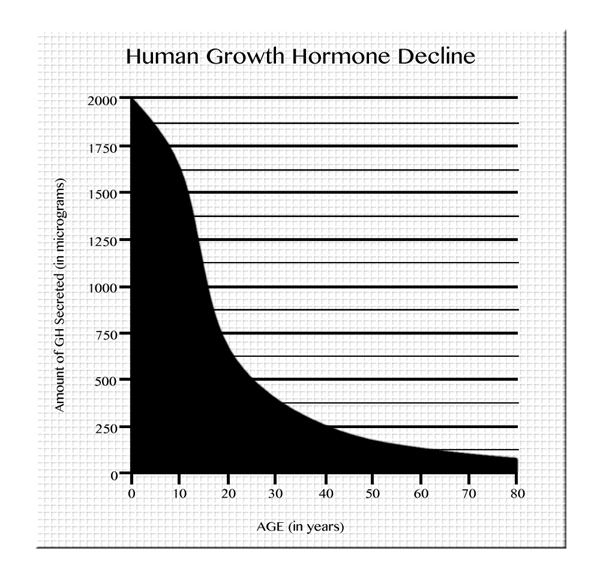
List of USA state clinics - click a flag below for blood testing clinics.
Word Count: 819



















































